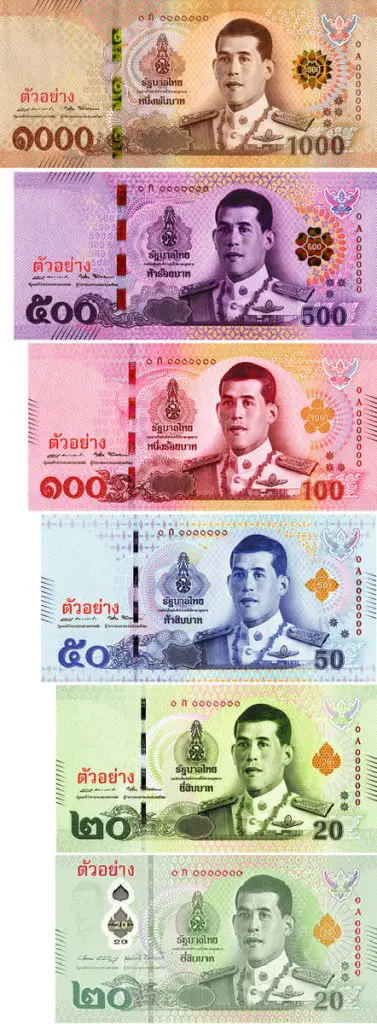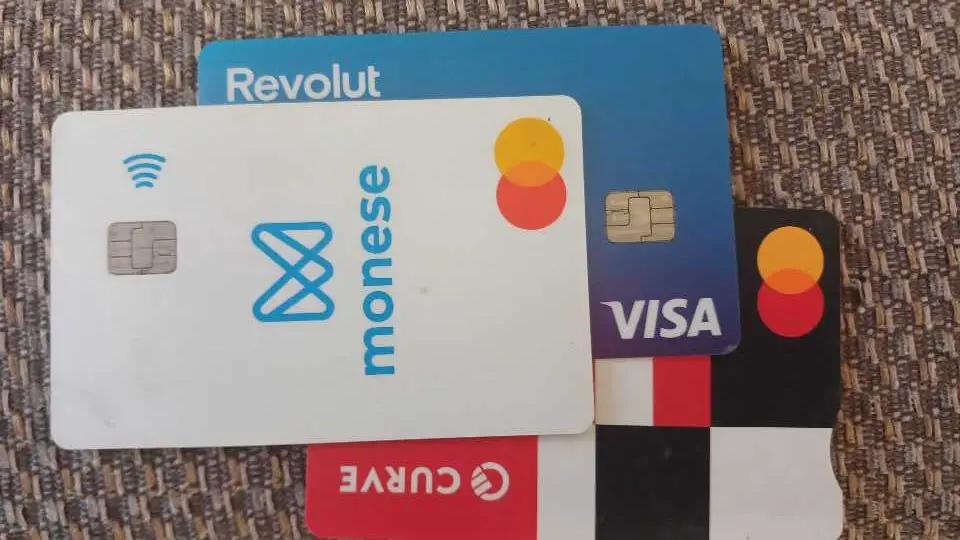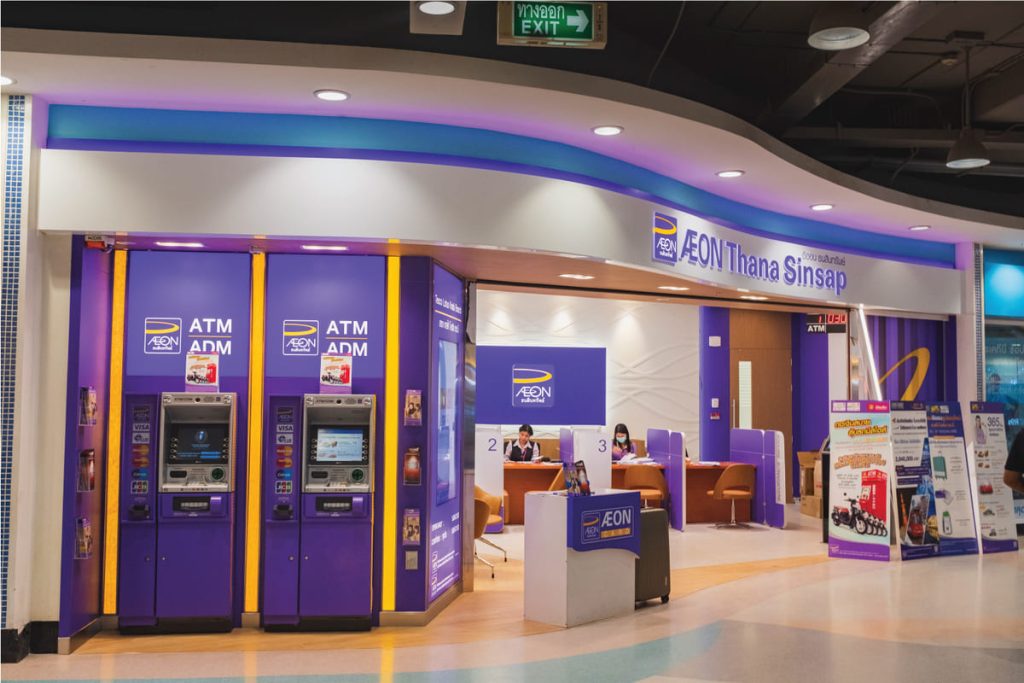Money in Thailand: A Tourist Guide to ATMs, Cards and Exchange
This post may contain affiliate links. If you make a purchase using one of these links, I may receive a small reward at no extra cost to you. See my Disclosure Policy for more information.
Thailand is one of the most visited countries in the world and a common first-time destination for backpackers in Southeast Asia. Whether a first-timer yourself or a seasoned Thailand traveler, I’ve prepared my top tips about money in Thailand.
I’ve put together everything I know about ATMs, exchanging money, and using your card in Thailand to help you save some cash and feel like you’ve beat the system of omnipresent fees.
| Best foreign currency to bring | USD, Euro, GBP, etc. |
| Where to exchange? | SuperRich exchange bureaus |
| ATMs without a fee | None. Lowest at AEON. |
| Can you withdraw USD directly? | No |
| Can you use Revolut, Wise, Monese, etc? | Yes! |
| Cash or card? | Mostly cash |
This is everything you need to know about money in Thailand as a tourist!
Currency in Thailand
The currency in Thailand is the Thai Baht with code THB.
Owing to the huge number of foreign visitors, the Thai Baht is one of the most traded currencies in the world. Yeah, it’s not as widely used as the US dollar or the Euro but go to any Southeast Asian country with Baht and you will have no problems.
Thailand’s Decimal Day came almost a century before the one in the UK. Ever since 1897, the currency in Thailand (or Siam until 1939) has been conveniently divisible by 100. One Baht equals 100 satang. At least in principle – in practice, satangs are very rarely used due to their low value.

Satang coins are in denominations 1, 5, 10, 25, and 50, although 1, 5, and 10 are only used between banks. You may come across 25 satang and 50 satang coins in which case keep them as a souvenir – you won’t manage to buy a lot with them (0.007 and 0.014 USD respectively).
Thai Baht coins are in denominations of 1, 2, 5, and 10. A new 20 Baht coin is planned but not released yet.
The banknote denominations are 20, 50, 100, 500, 1000. The largest banknotes – 1000 THB is worth around 28 USD so you won’t have to carry a large stack of cash like in neighboring Laos or like money in Indonesia.
Can you use your card in Thailand?
Yes, you can use your foreign card to pay at most places in Thailand.
Foreign card payments are becoming quite common in big cities. Hotels, restaurants, convenience stores (7/11 is a notable exception – these stores rarely accept card payment), supermarkets, even local tour operators will accept payments by card.
However, most will charge you a 2% to 5% commission. It’s most commonly 3% of the amount which is quite high.
Cash is king for smaller supermarkets, traditional open-air markets, family-run guesthouses, and most businesses in smaller towns.

All kinds of cards are accepted: Visa, Mastercard, Maestro, and American Express.
ATMs in Thailand
ATMs are everywhere in the cities of Thailand. Behind every corner, inside convenience stores and malls, at gas stations, and all airports. You will have no problems finding an ATM almost anywhere you go in the country – mountains or islands.

Visas and Mastercards have universal acceptance by ATMs. Other card types are also accepted on most ATMs.
The maximum withdrawal amount on ATMs is between 10.000 THB and 30.000 THB. It’s most often 20.000 THB but you can withdraw 25.000 THB from a Bangkok Bank ATM and even up to 30.000 THB from a Krungsri Bank ATM (Bank of Ayudhya).
A single withdrawal of 20.000 THB (~550 USD) can last you 2 weeks or more in Thailand. This paired with the high withdrawal fees is why you should withdraw the maximum every time (unless you have just a few days left in Thailand).
Withdrawal Fees
Here comes the tricky part – avoiding those annoying ATM withdrawal fees. I’m not talking about the fees you get charged by your bank – those you can avoid by using a FinTech solution like Revolut, Curve, or Monese.
All ATMs in Thailand charge a withdrawal fee between 150 and 220 THB (4-6 USD). Ouch!
The ATM with the lowest fees in Thailand is AEON Bank. It charges a flat 150 THB per withdrawal with a limit of 20.000 per transaction. This comes to 0.75% but in absolute value a fee of 4 USD is ridiculous – it’s equal to 5 street food meals!
Never accept automatic currency conversion if offered by the ATM. Always let your own bank do the exchange at a better rate.
Nonetheless, there’s a cheeky way to avoid paying this fee by withdrawing cash advance at a bank counter. Unfortunately, in recent years banks have introduced similar fees for doing that.
ATMs without withdrawal fees
There are no ATMs without withdrawal fees in Thailand.
The Thai Bankers Association has set a mandatory fee for using a foreign card on all ATMs inside Thailand. In a way, the Association functions like a cartel. Nobody likes cartels but that’s beside the point.
The lowest fee of 150 THB is at AEON bank ATMs, which are the best ATMs for tourists in Thailand. Use this to locate AEON ATMs in Thailand.

Alternatively, you can withdraw the maximum of 30.000 THB at a Krungsri Bank ATM (also known as Bank of Ayudhya) and pay 220 THB which is 0.73% – the lowest percentage you can get in Thailand (AEON is marginally worse at 0.75%). This is around 830 USD and may as well last you a whole month or more!
Citibank ATMs used to be free to withdraw from but UOB has bought out the bank and it now charges the same 220 THB fee as most other ATMs. The change happened sometime in early 2024 which is why you may see outdated information about it elsewhere on the internet.
How to withdraw money in Thailand without paying fees
Paying 150/220 THB every time you withdraw from an ATM can add up to a lot of money. Thankfully, there is a way to avoid paying any fee altogether!
A little-known trick is to withdraw cash directly over the counter at a Thai bank. The best bank to do this at is any branch of Bangkok Bank but others should also work in principle.
All you will need is your passport and a debit or credit card. Sometimes only Visa cards are accepted.
Banks have started adding a fee similar to the ATM one for this service. Beware and check my experience report in the next section.
Procedure
Quite simple actually:
- Go inside a bank branch
- Go to the currency exchange counter or the foreign remittance counter
- Tell the employee you want to withdraw cash using your card. If they tell you to use the ATM outside, insist that you want to do it over the counter. If they ask what card you have, say “credit card” regardless if that’s true or not.
- State the amount you want in Thai Baht. Not in a foreign currency. If you state an amount in anything other than Baht, you may get charged an unfavorable exchange rate.
- Give your passport and card and wait.
- Sign the receipt, a copy of your passport, and other documents.
- Receive your Thai Baht.
Possible Issues with over-the-counter withdrawals
Saving money is never too easy. Let me prep you for what to expect when you arrive at the bank branch.
- The staff doesn’t understand what you want: Google Translate helps and so does waving your card around, just don’t do it rudely.
- The bank doesn’t have the required tools/machine for such withdrawals: Go to another bank or branch.
- The employee directs you to the ATM: insist you want to do it over the counter.
- They claim not to accept debit cards: ask them to try anyway – chances are that it works regardless. Or just say it’s a credit card to begin with.
- Your card must be branded: Visa, Mastercard, Maestro, perhaps American Express and UnionPay. Chances are yours already is.
Over-the-counter withdrawal in Thailand – My Experience
In theory, withdrawing over the counter should be quick, easy, and fee-free.
In practice, it isn’t. Here’s my experience from my last trip to Thailand:
- The first bank I tried was a medium-sized branch of Bangkok Bank. They said they couldn’t do it.
- Second I tried another Bangkok Bank. The employee checked my passport against my card only to then check with his colleague and find out they don’t have “the machine”.
- Third I tried a Krungsri Bank branch. The transaction failed 3 times in a row. I have no failed transactions in my bank statement, so that’s a fault on their side.
- Fourth, I tried a branch of Krungthai Bank. They directed me to the ATM saying they didn’t have “the machine”.
- Finally, I managed to get money over the counter at Siam Commercial Bank. Unfortunately, they still charged me 200 THB and didn’t even confirm I was okay with this charge before proceeding. Well, I wasn’t, but it was too late as these transactions are not reversible.
- A month later I tried at Bangkok Bank again. The employee assured me that there would not be a fee for that. However, my card was rejected by the machine.
- Then I tried SCB and Krungthai Bank next door but both said it was not possible to withdraw over the counter, instead directing me to the ATM outside.
All in all, withdrawing over the counter is troublesome, and time-consuming and won’t necessarily even save you any money in fees.
I know of people who’ve successfully done fee-free it but in general, it seems to be a difficult task.
Exchanging Money in Thailand
With ATM access fees being so large, it could make sense to bring hard cash into Thailand and exchange for Thai Baht inside the country.
The best place to exchange foreign currency in Thailand is any exchange bureau office of Superrich where the margin for the most popular currencies like USD, Euro, and GBP is as low as 0.25%!
There are two types of Superrich – exchange at the green ones because they offer better rates than the orange ones.
What currency to bring
Owing to Thailand’s globalization and being incredibly well-connected to the rest of the world, you can bring any of the big currencies to exchange in Thailand.
You will have no issues exchanging:
- U.S. Dollar
- Euro
- British Pound
- Japanese Yen
- Malaysian Ringgit
- Chinese Yuan
- Swiss Franc
- Australian Dollar
- New Zealand Dollar
- Canadian Dollar
- Singaporean Dollar
- Korean Won
…and the list goes on
The currencies with the smallest margins are the USD and Euro.
Higher denominations yield better rates. For USD, the 50/100 rate is sometimes more than 1% better than the rate for 5/10/20.
Where to Exchange Money

Thailand is an ultra-popular travel destination and exchanging money is ubiquitous.
You can exchange at:
- Banks (Takes a few minutes. Bring your passport!)
- Exchange bureaus in a city (Best rates)
- Airports (worst rates)
- Hotels (just okay)
- Tour Agencies (bad rates considering there’s usually a bureau nearby)
- Dodgy guy at the market (you’re setting yourself up to be scammed)
Don’t exchange money in your own country – this is a surefire way to get the worst possible rate. Always change your foreign currency to Thai Baht inside Thailand.
Pro Tips and Common Scams
Scams are an intrinsic part of Southeast Asia. Not unavoidable but it definitely takes mental fortitude to keep your eyes peeled for scams 24/7 while in the region.
I won’t go into detail about all scams but here are some common money scams in Thailand:
- Wrong change scam – the vendor/merchant may pretend that you paid with a smaller banknote. Thai Baht banknotes have very different colors, so familiarize yourself with the money.
- Money exchange scam – this may happen if you exchange at less reputable places. If the rate looks too good to be true – it isn’t true. Always ask how much you will get for your currency before agreeing to a transaction and handing out cash. And always count the money at the counter when you receive it!
- Money exchange scam 2 – If an exchange bureau worker asks you to count the money and hand it back – SCAM ALERT! The amount will be correct the first time and then through sleight of hand or other tricky methods, you will be given less. When you are given the money it should be the last time money changes hands!
- “Ostensibly free” scam – This is what I call all those scams where you don’t expect to have to pay but get asked anyway. You get given bird food? You will be asked to pay for it. A local takes a picture of you? They will demand money.
- Gem Scam – Very succinctly put – don’t buy gems and jewelry unless you are absolutely certain the establishment is reputable.
- Know the multiple of your currency. Say you use US dollars and 100 THB is around 3$. Your multiple is 3. If the price of something is 400 THB, ignore the zeroes, multiply by 3 and you have 12$; Quick maths: 65 THB? -> 65*3 =1.95$ USD (NB: 100 THB is actually around 2.8 USD, so just remove a little from the final sum, i.e. 65 THB is actually ~1.8 USD).
How much cash to bring to Thailand?
This depends on your way of traveling and your budget. You can use your card so there is no need to go overboard with the physical cash you bring.
Even with the high withdrawal fees, it may save you money to withdraw instead of exchange, especially if you come from a country with a weaker currency and have to exchange twice.
On the other hand, money exchanges in Thailand (especially SuperRich) have one of the smallest margins I’ve seen in all my travels. So if your currency is a strong global one to begin with, you may as well bring a few hundred of it to cover your expenses.
When I went to Thailand, I withdrew money using AEON ATMs (150 THB fee), exchanged a few hundred USD and withdrew over-the-counter (still got charged 200 THB though).

Example prices
These are actual price ranges from 2024. 100 THB is around 2.8 USD or 2.6 euro. All prices below are in Thai Baht.
- Street food meal: 40-100 THB
- 1-hour full-body massage: 200-500 THB
- Budget hostel: 250 – 600 THB
- Guesthouses: 350 – 600 THB
- Mid-range hotels: 600 – 1000 THB
- Half-day group tour: 1000-2500 THB
- Public transport in Bangkok: 10-40 THB
- Bangkok to Chiang Mai train, 2nd class: ~650 THB
- Overland bus travel – ~75 THB per 100 km
- Travel Insurance from SafetyWing (covers you in Thailand): ~42 USD for a 3-week trip.

Bargaining
Bargaining is a part of daily life in Thailand. Especially if you’re a foreigner.
The first price you hear will usually be double the actual. With some playful bargaining, you can expect to pay 30-40% less than what you were initially quoted.
Don’t bargain at street food stalls where the prices are already 40-50 THB per meal.
Bargain harder at markets frequented by more tourists.
Tipping
Tipping is not mandatory in Thailand. Thai people don’t tip
However, tipping is very much appreciated and will bring about a few smiles or a ‘wai’ gesture your way.
Tip 10% in restaurants, round up the bill in taxis, 20-50 THB per round of drinks in the bar, and 10-20% for the masseuse after the massage.
Frequently Asked Questions
Let’s answer some of your most burning questions about money in Thailand.
What is the ATM withdrawal limit in Thailand?
ATMs have a withdrawal limit between 10.000 and 30.000 THB (275-820 USD).
Krungsri is one bank that allows you to withdraw up to 30.000 THB.
Can you use US dollars in Thailand?
You can use US dollars to pay for SOME things in Thailand.
In some places, especially touristy areas in Bangkok, you may see prices advertised in US dollars.
But why would you want to pay in USD? You will get a horrible rate.
The official currency is the Thai Baht – use it for all purchases in Thailand.
Can you use Revolut in Thailand?
Yes, Revolut works in Thailand. Both VISA and Mastercard work. You can withdraw from ATMs and pay on POS terminals with your Revolut card.
Similar fintech apps like Wise, Monese, Curve, N26, and Starling also work there.
If you are going to other Southeast Asian countries, you may want to read my money guides for them too:
